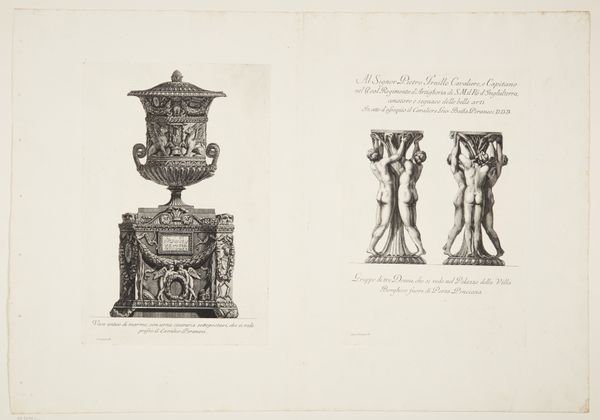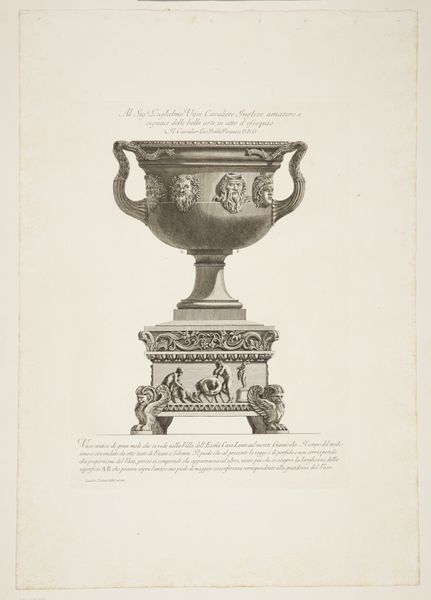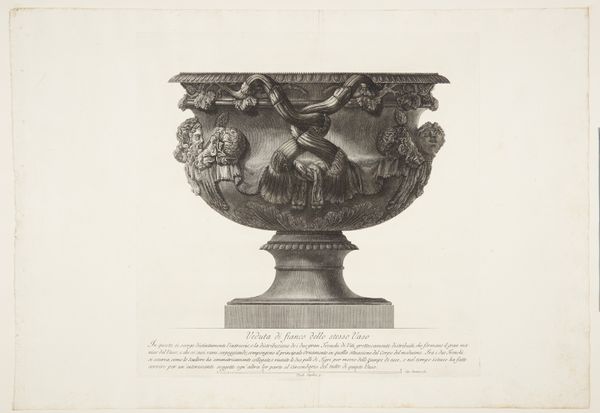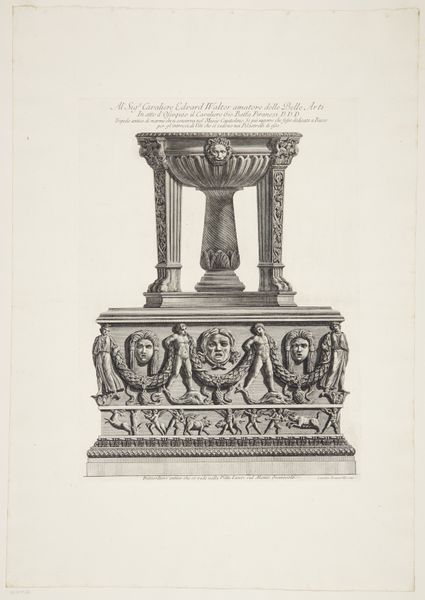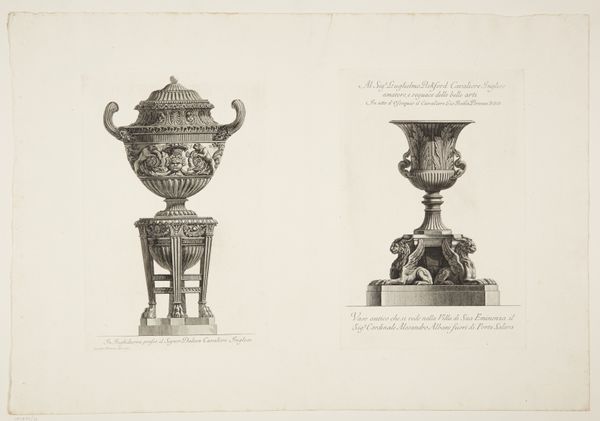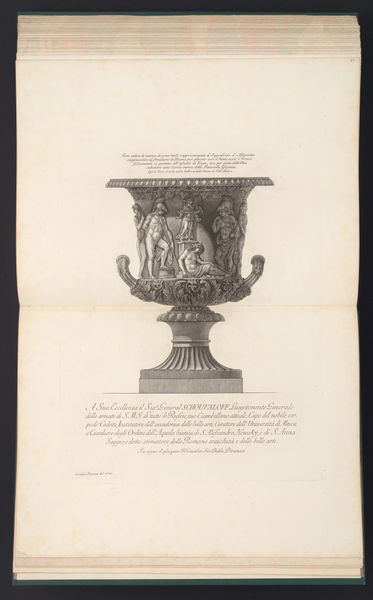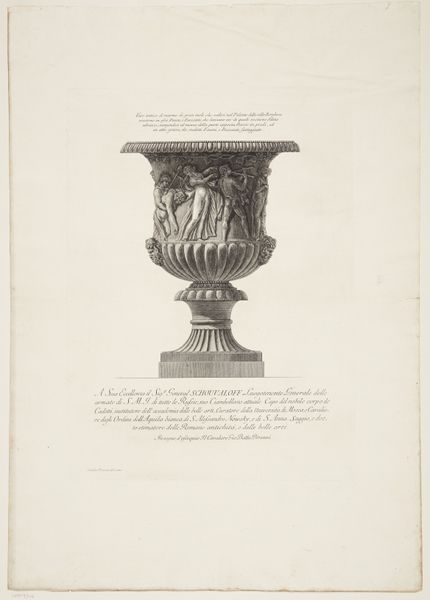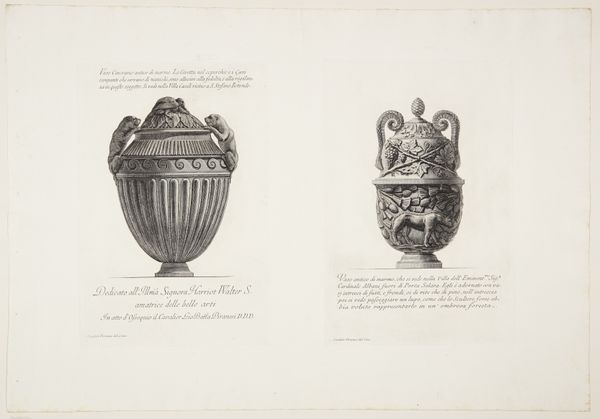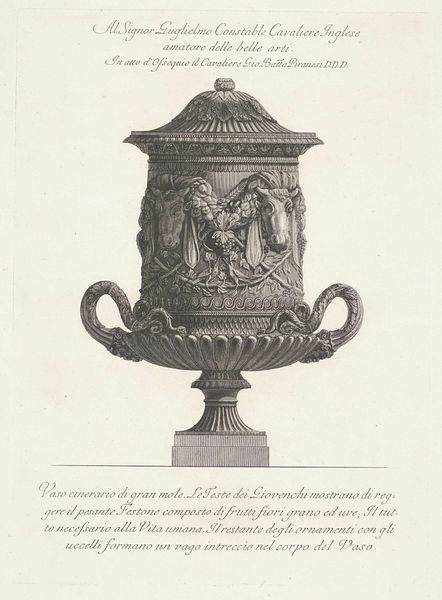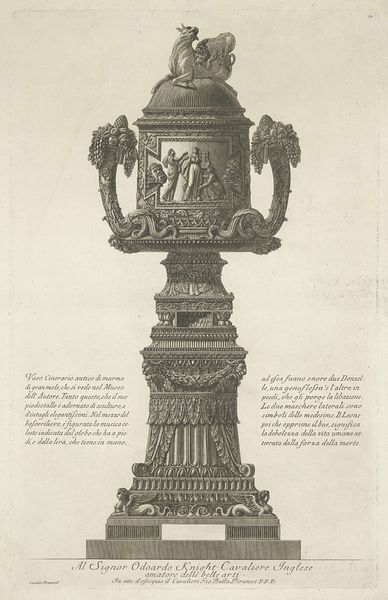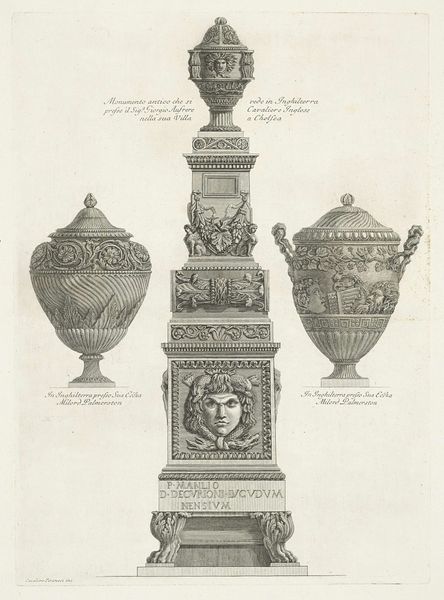
Cinerary urn ornamented with an owl flanked by bucrania with sphinxes below and cinerary urn decorated with a frieze of bacchantes 1769 - 1778
0:00
0:00
print, engraving, architecture
#
neoclacissism
# print
#
history-painting
#
engraving
#
architecture
Dimensions: 552 mm (height) x 795 mm (width) (bladmaal)
Curator: This print by Giovanni Battista Piranesi, created between 1769 and 1778, showcases two distinct cinerary urn designs: one ornamented with an owl flanked by bucrania with sphinxes below, and the other decorated with a frieze of bacchantes. The architectural detail is quite striking, isn't it? Editor: Absolutely. There's a powerful stillness to the images despite the potential for frenetic energy given the decorative nature of both objects and classical themes, a very precise linework and sense of form and a feeling of antiquity... the rendering makes them seem almost ghostly on the page. Curator: The ghostly effect works with their actual function, doesn’t it? We should acknowledge that the cinerary urn, particularly in the Roman context so dear to Piranesi, became a locus for expressing not just grief but also aspirations for immortality and remembrance. Look closely at the figures chosen; the owl symbolizing wisdom, and the bacchantes, the revelers associated with Dionysus—god of wine, theater, ecstasy...death and rebirth. Editor: The juxtaposition there is interesting; those carefully wrought bucrania paired with such explicitly libertine themes. Can you tell me a bit more about that choice and connection, it feels pointed in relation to the funerary purpose of these objects. Curator: Piranesi was fascinated by the tension between public virtue and private indulgence in Roman society. These prints offer us, especially when looked at together, a chance to explore that moral paradox in the eighteenth century. The frieze of bacchantes would’ve signaled freedom and even disruption from traditional patriarchal society...the owl’s association with knowledge would have provided another clue of its symbolic function in the hands of its users. Editor: It does re-imagine those familiar symbolic structures for this society, providing a striking twist...It all becomes a cohesive study in contrasts within Neoclassical order itself. Curator: Indeed, through close visual analysis informed by understanding the object's historic context, we begin to glean insights beyond aesthetics. The arrangement itself encourages an intersectional reading of class, identity, and philosophical engagement. Editor: Focusing on these aesthetic arrangements highlights a unique dialogue. Thank you for guiding me into such thoughtful consideration. Curator: And thank you, looking at Piranesi’s work through a formalist lens gives additional interpretive possibility.
Comments
No comments
Be the first to comment and join the conversation on the ultimate creative platform.
